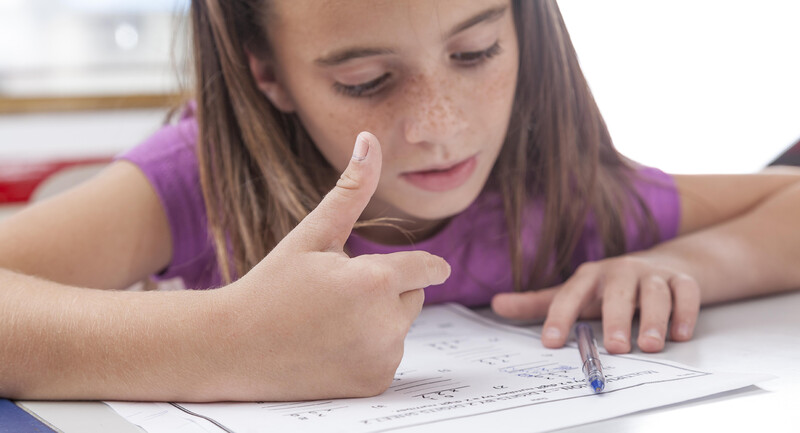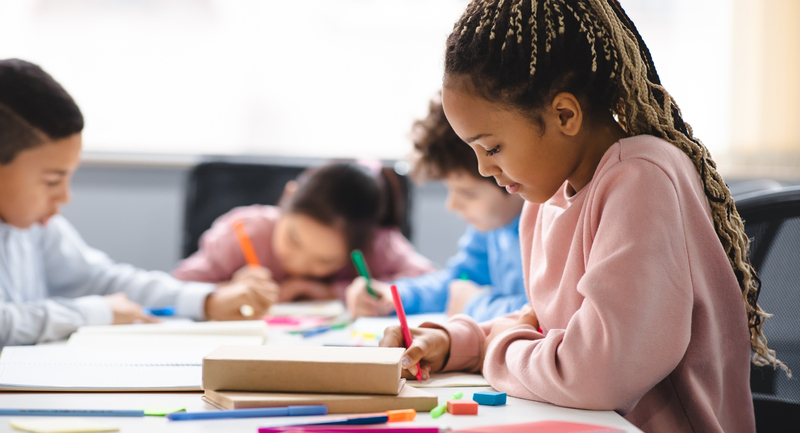Educators today are faced with the daunting task of teaching students that face personal and social-emotional challenges on a broad scale unlike any other generation. We now have in our schools what we refer to as the recession babies—a generation of children whose parents experienced hardships, loss of jobs, addiction, and other tragedies during very trying economic times. Many of them have yet to recover. Caught in the middle of this social, moral, and ethical dilemma is the teacher who is faced with ensuring the delivery of content and skills necessary to “close the gap” and ensure proficiency on standardized assessments.
In order to do this there have been a number of “practices” or genres if you will, of instructional themes and curriculums developed to address the individual issues: culturally responsive teaching, teaching with poverty in mind, trauma-informed practice, the list goes on. Just the plethora of different acronyms alone can be overwhelming to the practitioner but trying to understand the complexities of each and utilize relevant classroom strategies for each is next-level overwhelming.
So let’s keep it simple. Here are our top 10 strategies and practices that can help all students overcome barriers.
1. Build relationships
Relationships and the importance of them in the classroom never goes away. As the education pendulum flies back and forth, one thing that you can always count on still being at the forefront of making a difference in the classroom is the idea of relationships. If you don’t have a relationship with your students the work you do on a daily basis will be flat and not nearly as effective as what it could be. Take the time to build connections with each and every one of your students. What makes them tick? What are their interests? What are their hopes and desires? These are all things that you continue to build and cultivate as the year progresses—community and relationship building does not just stop after the first two weeks. Regardless of class size or other circumstances that have an impact on the classroom, this is number one for a reason!
2. Be intentional with your lesson planning
As you sit down and plan out the upcoming week, really give some thought to how you are going to reach all your students. What are the various entry points students are going to need to access the curriculum and reach your lesson target? Or perhaps, how can you help engage students at the start so they are ready to learn? Would a morning meeting or quick team building activity in table groups help get the kids primed for learning? Have a warm-up to settle and set a tone. Review the learning targets for the lesson to inform the students and tune them in.
3. Use a balanced data approach
Using data to drive your instruction and decisions is vital. However, it needs to be done in a balanced approach to where you are taking into consideration your students and the direct knowledge you have about them. As educators, we are lucky that we know more about our students than what can be represented on a test. Use this information to help drive your instruction and decisions. How can you leverage this knowledge to help improve outcomes for kids? Are there additional ways that you can help support your students? Apply formative practices that not only will inform you of the “Are they getting it?” factor, but also use them to inform your students about their own progress.
4. Have high and consistent expectations
Most of us believe we have high expectations for kids, which is good. However, don’t let your high expectations limit your students with what they can accomplish. Your students will reach and often surpass your high expectations and when they do, don’t hold them back. Often our perception of what they can accomplish limits them, even when they are set at high levels. Push the students and they will surprise you…and you might surprise yourself. Also, those expectations need to be held consistent throughout the building. Expectations are the constitution of the school and need to be known and upheld in all areas at all times. Students from trauma or adverse backgrounds have significant difficulties adapting to differing systems or environments.
5. Scaffold instruction to grade level standards
Kids need access to grade level curriculum and grade level expectations. Yes, some students are not ready for it but if we keep playing catch-up by working on math facts when they are in middle school, they are never going to get exposed to higher level thinking. Educators need to find ways to expose all students to grade level curriculum and standards while scaffolding their learning or finding ways to provide intervention to them outside of the core instruction.
6. Teach vocabulary explicitly
Vocabulary, vocabulary, and more vocabulary. You’ve read the research: students coming from a poverty background have been exposed to an incredible shortage of words compared to their peers brought up in a middle class home. What does this mean to you as an educator? You have to go double time to expose kids to vocabulary that is varied, challenging, and new to them. Students need a rich vocabulary environment to catch-up and this doesn’t mean that you teach the same themed words that come with the various seasons. You have to be intentional about this and constantly on the lookout for opportunities to build this. Focus not only on the Tier 3 words which are content-specific but provide ample exposure to the Tier 2 words that provide meaning and comprehension.
7. Get your students engaged and excited
If you aren’t engaged and excited, your students won’t be engaged or excited, it’s as simple as that. You have to look for ways to connect the learning and content standards back to your students. How can you capture their attention? Show your excitement and get passionate! Use relevant practices and put the students in charge of their own learning. Groups, pairs, share outs, questions, and reflections encourage deeper thinking and provide meaning.
8. Reflect and reflect often
Teaching and learning can be a rushed, fast paced experience—only it doesn’t have to be. Time needs to be built into the day or class period where students reflect on what they’re learning and make meaning of it. This helps with processing information as they reconcile it with their prior knowledge and work to make the information stick. This is a great opportunity for thinking to be clarified, questions to be sought, or learning to be extended. Simple journal responses are a great way to incorporate this into the classroom.
9. Provide multiple opportunities; strive to embed learning
We all have bad days and so do students. Just because you taught something or gave a test doesn’t mean that you are done with the concept and move on. Students come to school with a lot of baggage that we aren’t always aware of. By circling back through the curriculum and allowing students to retake tests and learn from their mistakes, you give more students access to your instruction and gain a better understanding of where they are with their learning. Let’s face it, learning can be messy and if you try to put it into a simple box or a single class period and then move on, it isn’t always effective.
10. Don’t be afraid to be vulnerable
If you have a struggling student and you aren’t sure how you can help, just ask. Showing that you are human too, and not just an authoritarian figure, can go a long way.
John George currently serves as the principal of Dexter McCarty Middle School in the Gresham Barlow School District. He was the Oregon Middle School Principal of the Year in 2014. Prior to serving as a middle school principal, he was a turnaround principal and a district office administrator. George specializes in instructional improvement and turning around struggling schools and districts.








